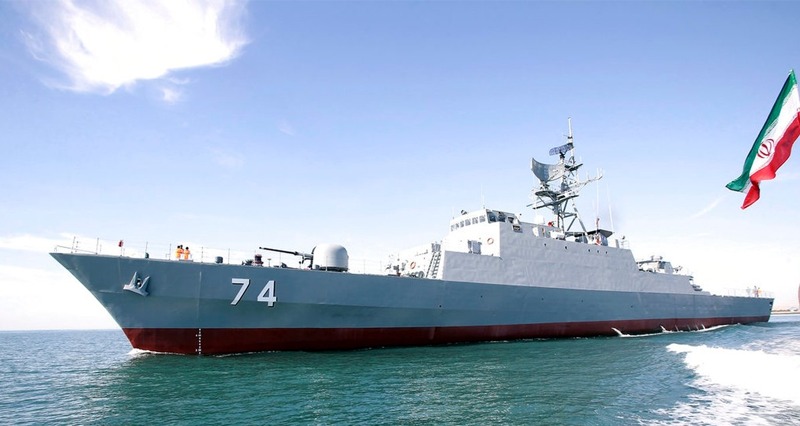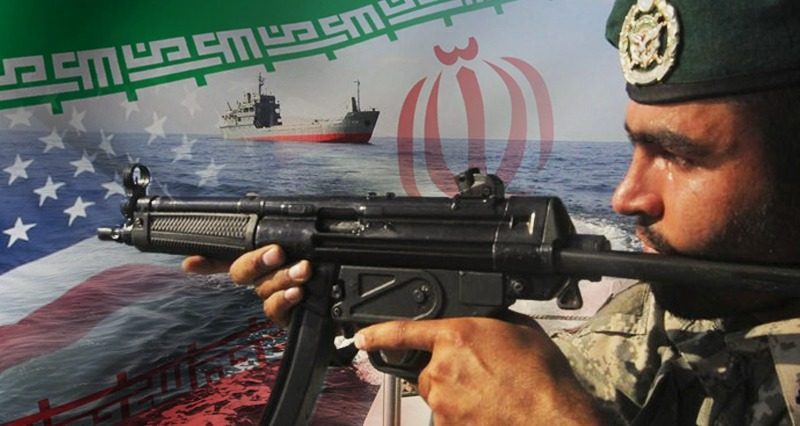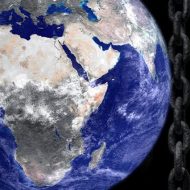Admiral Touraj Hassani, Deputy of the Iranian Navy, announced a plan to send a fleet of warships to the Atlantic Ocean by March 2019. What does Iran actually hope to accomplish with this provocative move?
Shortly before the Islamic Revolution in 1979, the Shah bought three destroyers from the US to strengthen Iran’s Navy. Although the bill for the warships was paid the full, the ships were never delivered to Iran due to the revolution. As a result, the newly formed Islamic Republic had to manage with some small battleships and speedboats during the Iran-Iraq war.
By the end of the war, the Iranian Navy was almost completely destroyed, and the country was forced to start rebuilding its fleet nearly from scratch.
Their Navy had been dependent on western weapons before the revolution, at which point it turned toward Russia, China, India and North Korea to meet their needs. A domestic weapons industry was also developed.
The Iranian Navy now includes:
300 Frigates and battleships
5 domestic made Destroyers
2000 powerboats (under 90 km/h speed)
1000 high-speed powerboats (over 90km/h speed)
37 Coast Guard ships
8 mine ships
100000 mines
6 backup destroyers
23 ch53 Helicopters
56 C-King Helicopters
6 Hovercrafts
2 destroyer Carriers able to carry helicopters
15 submarines
1 airplane carrier which is currently under construction
These statistics only regard the Iranian Navy itself: the country’s Revolutionary Guard has its own separate naval force.

Despite the impressive numbers, there can be no comparison between the Iranian Navy and the US Navy, which is the largest and most sophisticated in the world. With this in mind, Iran’s threat to deploy its forces near the US border in the Atlantic seems nothing less than suicidal.
There are several possible explanations for the threat being leveled:
1 – Iran has already built warships and destroyers capable of reaching far oceans and intends to test their ability.
2 – If Washington has the right to send its warships and carriers to the Persian Gulf, some 12000 thousand kilometers away from US soil, Iran (as well as any other country threatened by the US Navy) should be able to send its warships to the Atlantic ocean.
3 – Despite that the US Navy is threatening Iran in the Persian Gulf, Iran feels powerful enough to defend its shores and that it can send some of its extra ships out for other purposes.
It is still not fully clear why US ships remain in the region. It can not simply be a question of military threat, being as the US air force could easily and more-or-less safely fly over the Indian ocean and reach Iran in minutes: the American ships patrolling the gulf (despite their technological advantages) seem to do little more than provide Iran with a ripe target.
Washington likely sent its carries over to provoke the Iranians, and Hassani’s speech might indicate their efforts were successful.
4 – Iran might also be attempting to circumvent US sanctions which threaten shipments of Iranian goods and anyone who agrees to insure them.
It recently came to light that Iran has been sending out oil tankers with their tracking systems turned off to clandestinely meet with smaller ships who then deliver the oil off the records. Naturally, the Americans are now patrolling the oceans and looking to blockade these or destroy these ships.
Until now the American Navy hasn’t attacked these tankers directly but has instead used pirates (such as Somalian pirates) to attack and steal the goods, although some rumors claim that an American Torpedo did destroy one Iranian Tanker in the Sea of China last Year.
According to these rumors, the Oil Tanker was carrying Iranian oil to North Korea.
If the rumors are true then the main reason for Iranian presence in the Atlantic Ocean might be to show that Iran is ready to protect its trade ships and guarantee its oil deliveries to Western Europe.
One of the reasons the so-called European Financial package or SPV (which would waive American sanctions against European companies who want to continue working with Iran) has been stuck in place is that no International insurance company is ready to ensure trade with Iran, and the Europeans believe that the Iranian Shipping and insurance company are not able to give sufficient guarantee that the American navy won’t interrupt them.
The Iranian Navy has been able to protect shipping in the Indian Ocean and the Gulf of Eden and now it wants to prove that it is able to do the same in the Atlantic Ocean.
Trump’s decision to withdraw from the JCPOA and impose new sanctions has led to a dead end and has only strengthened the voice’s of Iran’s anti-American hardliners.
These figures believe that the only way to move forward is to raise tensions and provoke challenges, and think it is impossible to get the international community to pressure the US to stop its aggression. If no solution is found, such heated relations might lead to a war that would have devastating consequences for all involved.









Leave a Reply